While there are various types of dashi stock in Japan, Anchovy Dashi is one of the most common and is used daily. Broaden your culinary horizons by adding this flavorful stock to your repertoire.
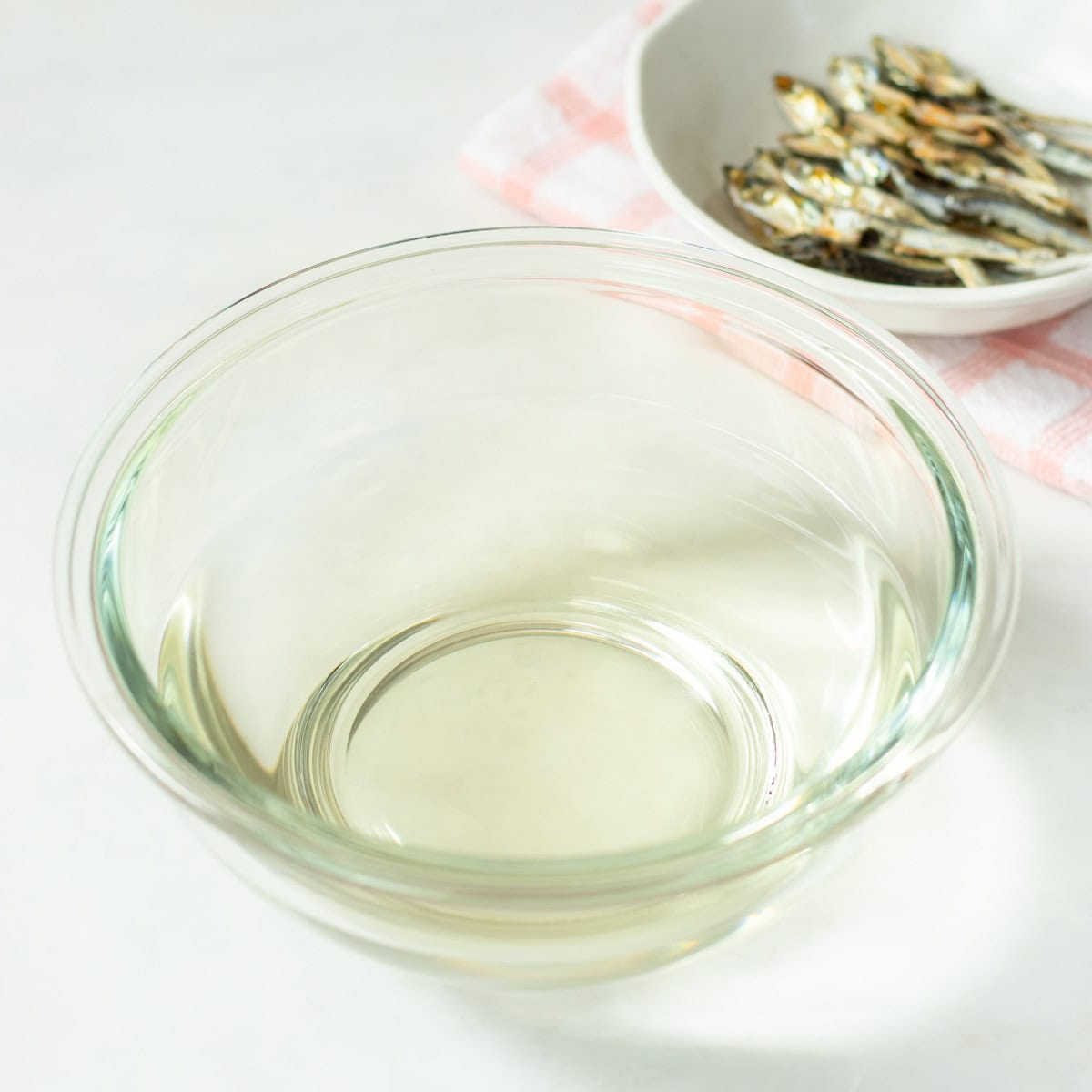
Jump to:
What is Anchovy Dashi?
Anchovy Dashi, also known as Iriko Dashi or Niboshi Dashi in Japan, is a type of dashi stock made by extracting flavor from dried anchovies or other small fish. These dried fish are made by boiling fresh ones and then drying them, and they are rich in inosinic acid, one of the umami components that humans perceive as delicious. As a result, the stock made from them has a deep, distinctive flavor.
While anchovy dashi is delightful on its own, combining it with kombu (dried kelp) enhances its umami through a synergistic effect, resulting in an even more flavorful stock. This combined dashi, known as awase dashi, is also one of the staple stocks in Japanese cuisine.
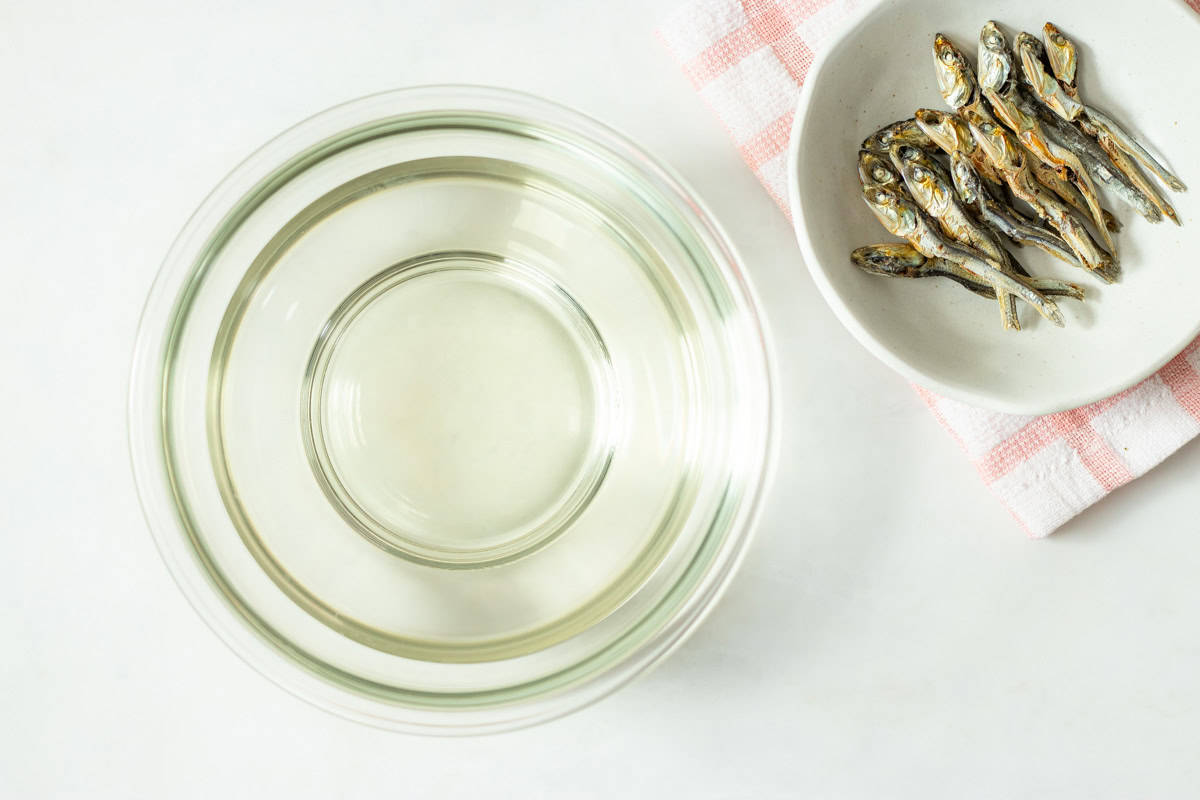
Cold brewing method
There are two methods to prepare anchovy dashi: cold brewing and simmering. Each method offers slightly different flavor profiles.
When using the cold brewing method, you can achieve a delicate and clear stock with minimal bitterness. The process is quite simple: just add water and dried anchovies to a bowl and let them soak for about 8 hours. Since there is no need to prep the anchovies, you can make it with little effort.
When including kombu to make awase dashi, add it to the water at the same time as the anchovies. As with the method described earlier, there is no need to prep the ingredients, but it is best to remove the kombu within 10 hours, as soaking it for longer may cause the water to become cloudy and develop a strong kombu odor.
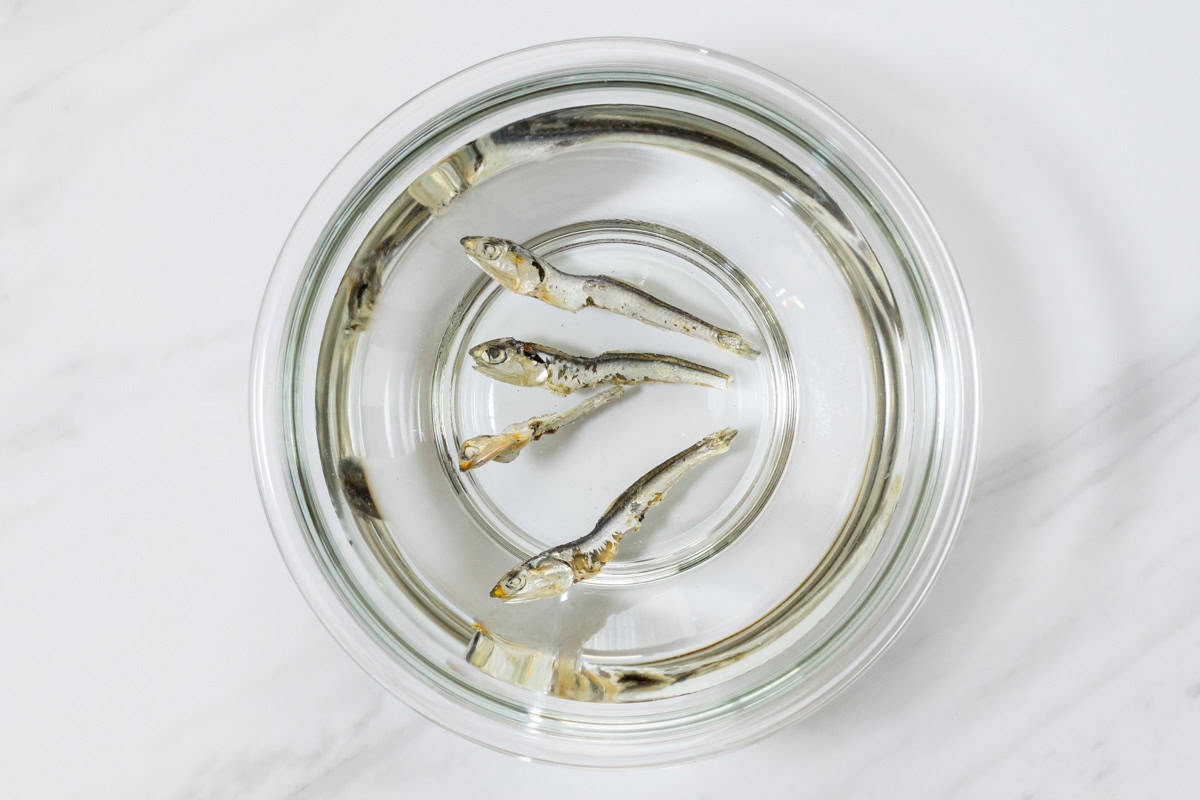
Simmering method
If you want to make anchovy dashi quickly, the simmering method is recommended. It also doesn't require much effort.
First, add water and dried anchovies to a pot and let them sit for a while to help release their flavor more easily. Then, bring the pot to a boil and gently simmer to extract the stock.
Since this method brings out both the umami and bitterness of the anchovies, you can remove their heads and guts beforehand to create a cleaner-tasting stock. However, this preparation is a bit time-consuming, so some Japanese people skip this step in everyday cooking and reserve it for special occasions, such as when guests are visiting.
When making awase dashi with kombu, add the kombu to a pot of water and let it sit with the anchovies to help release their flavors more easily. Then, gently heat the pot over very low heat. Remove the kombu just before the water starts to boil for the best results, continue simmering the anchovies, and your awase dashi is ready.

How to use it in cooking
When it comes to dashi stock in Japan, bonito dashi is the most common type, and you can find recipes using it in various cookbooks and websites. Anchovy dashi can usually be used as a substitute for the bonito dashi called for in those recipes.
I personally recommend using it, especially for miso soup and udon noodle soup. In these dishes, the flavor of the dashi significantly influences the overall taste, so changing the dashi allows you to enjoy the dish with a different flavor profile.
For miso soup, it is a good idea to vary the type of dashi you use depending on your mood. As for udon noodle soup, you can achieve a more complex flavor by making dashi from kombu, bonito flakes, and dried anchovies.
Anchovy dashi has a distinct flavor compared to bonito dashi, so feel free to try it in various dishes.
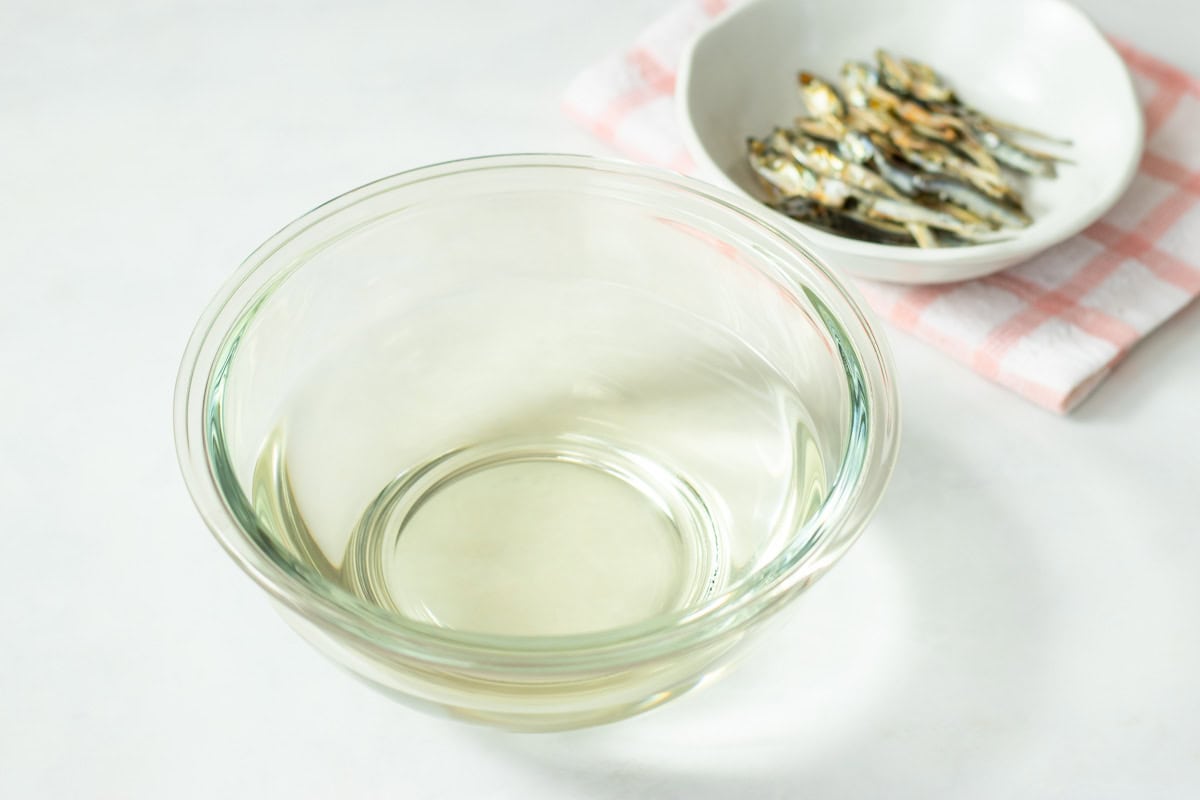
📋Step-by-step recipe
Ingredients
- 2 cups water
- 0.17 oz dried anchovies
- 0.17 oz kombu (dried kelp) (for making awase dashi)
Instructions
🕒 Total: 8 hrsCold brewing method:

Step 1
Put water and dried anchovies in a bowl, and let them soak in the refrigerator for at least 8 hours. Then, remove the anchovies from the bowl.
Cold brewing method with kombu (for making awase dashi):
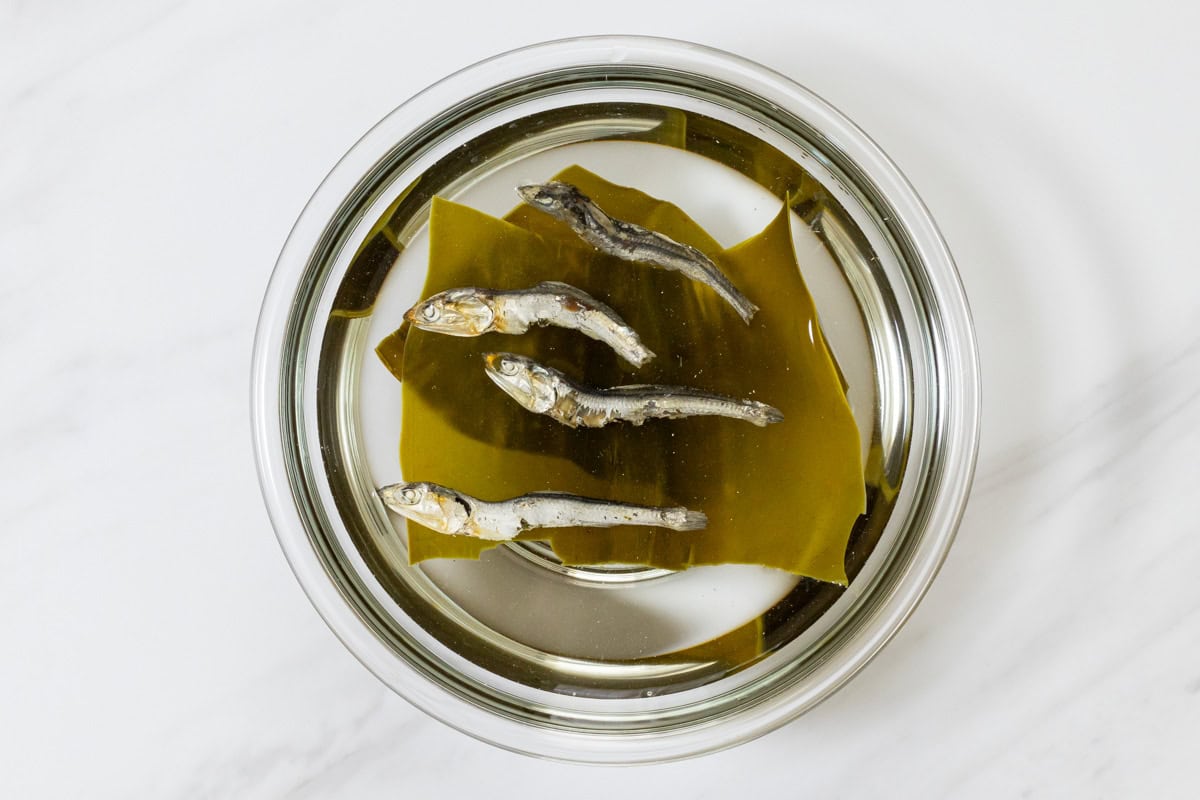
Step 1
Put water, dried anchovies, and kombu in a bowl, and let them soak in the refrigerator for at least 8 hours. Then, remove the anchovies and kombu from the bowl.
Simmering method:
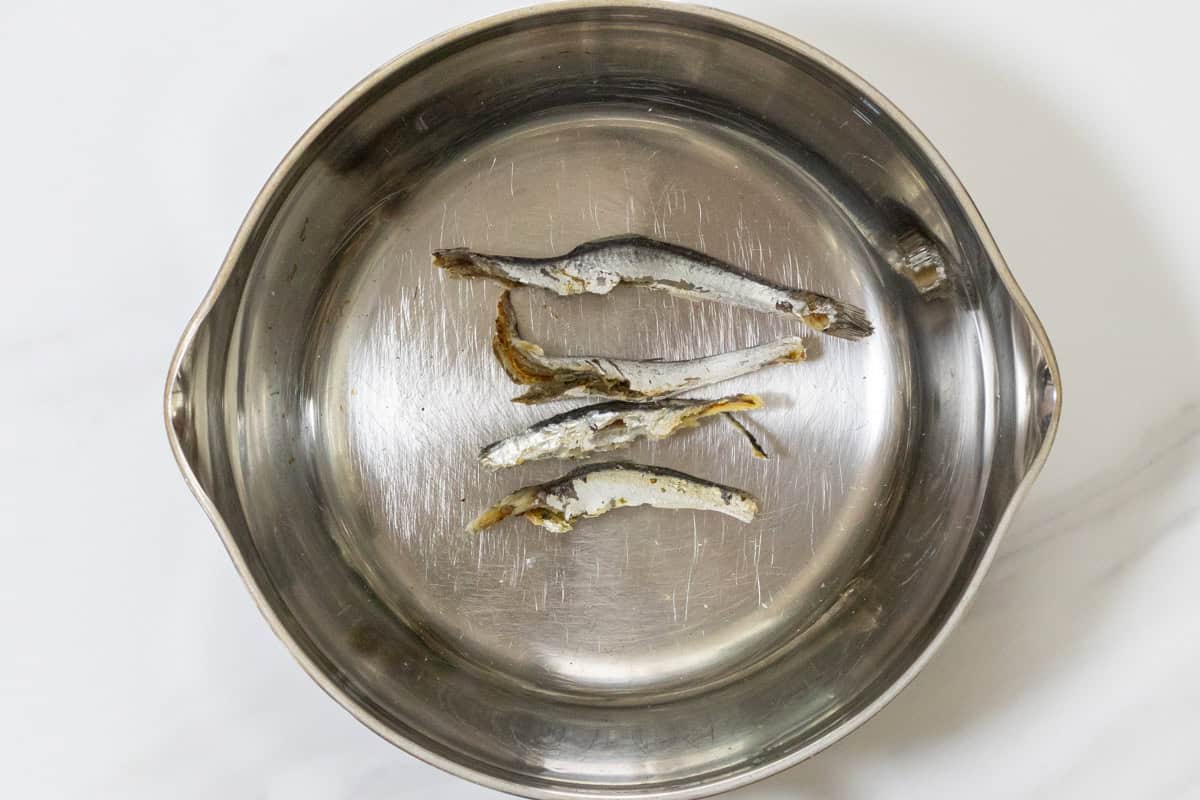
Step 1
Put water and dried anchovies* in a pot, and let them sit for at least 5 minutes.
* To reduce bitterness in the stock, you can optionally remove the heads and guts from the anchovies beforehand.

Step 2
Heat the pot over medium heat. Once boiling, reduce the heat to low and simmer for 5 minutes, skimming off any scum. Then, remove the anchovies from the pot.
Simmering method with kombu (for making awase dashi):
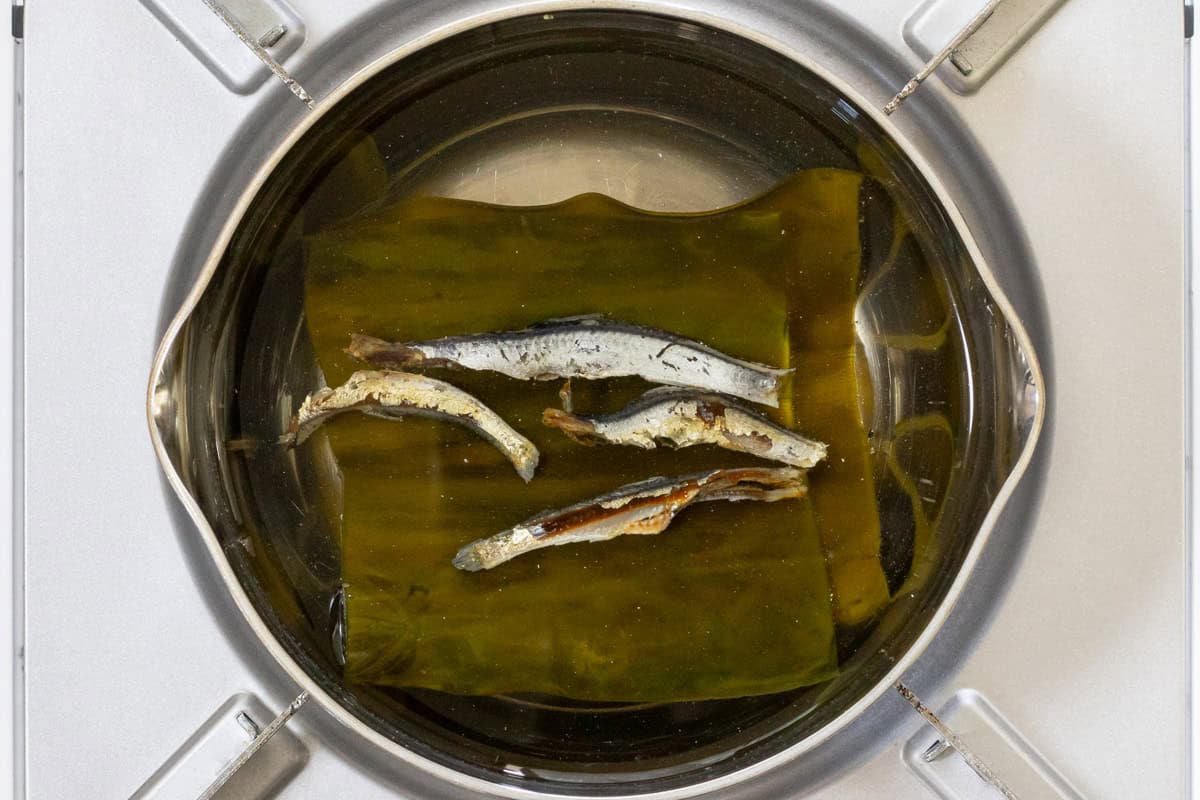
Step 1
Put water, dried anchovies*, and kombu in a pot, and let them sit for at least 30 minutes.
* To reduce bitterness in the stock, you can optionally remove the heads and guts from the anchovies beforehand.
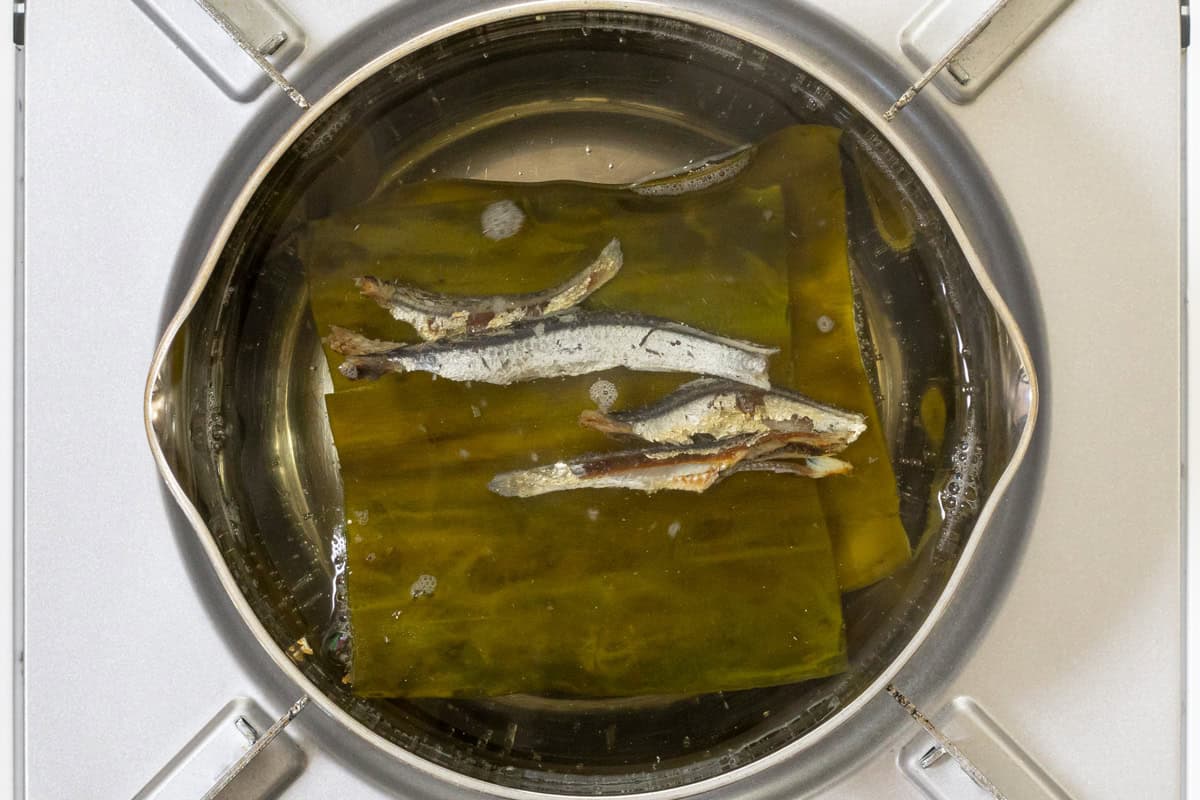
Step 2
Heat the pot over very low heat. When small bubbles begin to appear on the surface, remove the kombu.
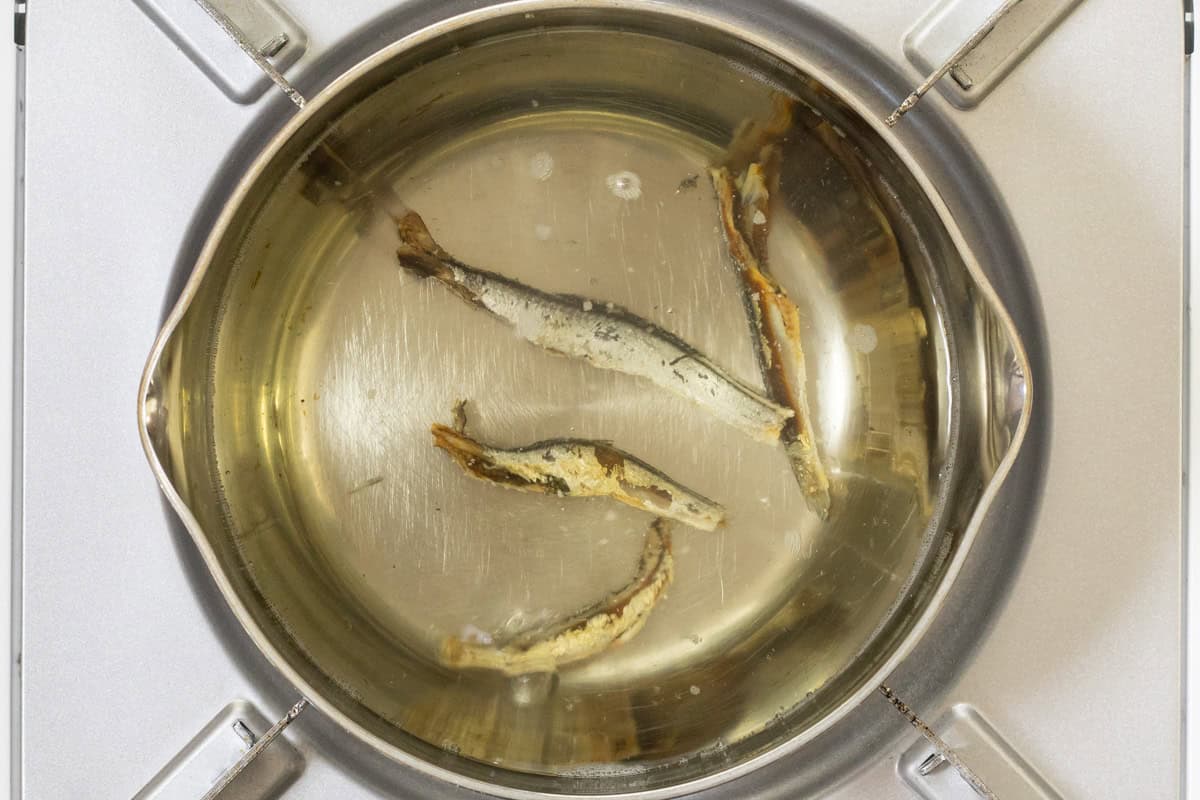
Step 3
Increase the heat to medium and bring it to a boil. Once boiling, reduce the heat to low and simmer for 5 minutes, skimming off any scum. Then, remove the anchovies from the pot.
To store
You can store it in the refrigerator for up to 3 days or in the freezer for up to a month.
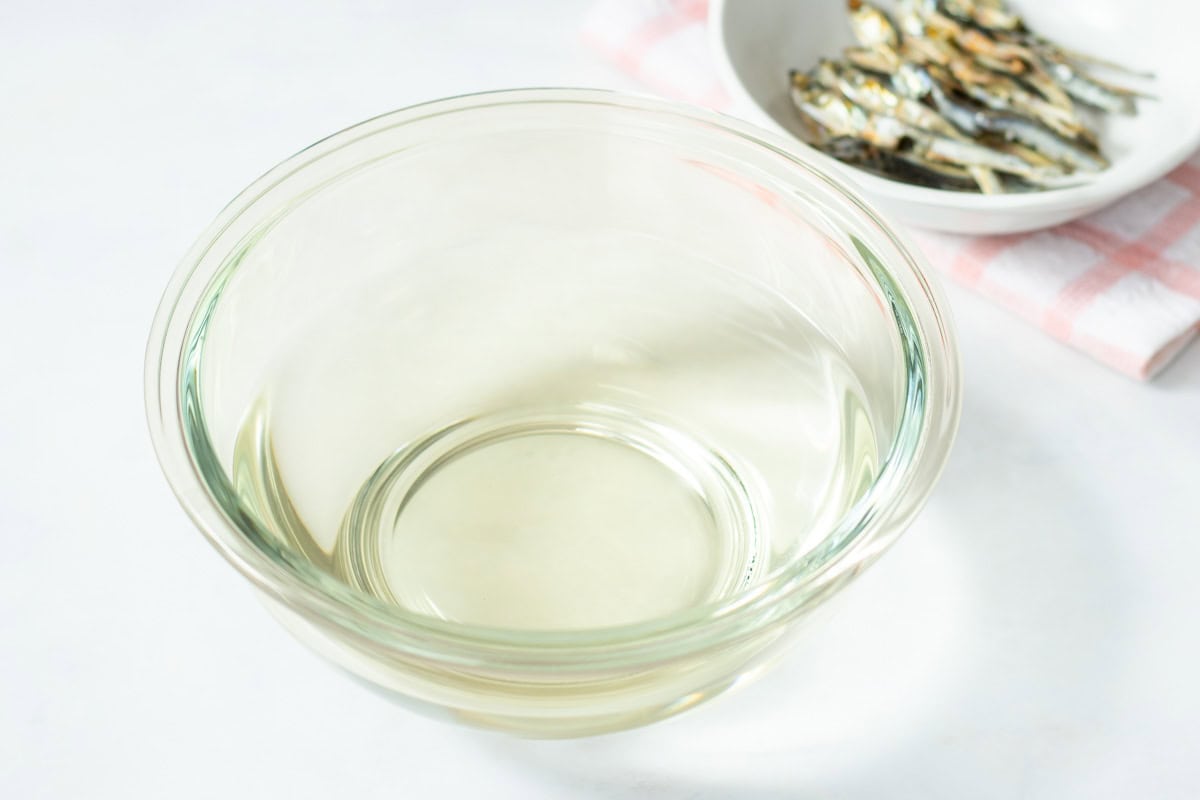
If you try this recipe, I’d love to hear what you think. Please consider leaving a review and star rating in the comments below. If you enjoyed it, I’d really appreciate it if you shared it with your friends.
More Japanese dashi recipes
Recipe card

Anchovy Dashi (Iriko Dashi / Niboshi Dashi)
Ingredients
- 2 cups water
- 0.17 oz dried anchovies
- 0.17 oz kombu (dried kelp) (for making awase dashi)
Instructions
Cold brewing method:
- Put water and dried anchovies in a bowl, and let them soak in the refrigerator for at least 8 hours. Then, remove the anchovies from the bowl.
Cold brewing method with kombu (for making awase dashi):
- Put water, dried anchovies, and kombu in a bowl, and let them soak in the refrigerator for at least 8 hours. Then, remove the anchovies and kombu from the bowl.
Simmering method:
- Put water and dried anchovies* in a pot, and let them sit for at least 5 minutes.* To reduce bitterness in the stock, you can optionally remove the heads and guts from the anchovies beforehand.
- Heat the pot over medium heat. Once boiling, reduce the heat to low and simmer for 5 minutes, skimming off any scum. Then, remove the anchovies from the pot.
Simmering method with kombu (for making awase dashi):
- Put water, dried anchovies*, and kombu in a pot, and let them sit for at least 30 minutes.* To reduce bitterness in the stock, you can optionally remove the heads and guts from the anchovies beforehand.
- Heat the pot over very low heat. When small bubbles begin to appear on the surface, remove the kombu.
- Increase the heat to medium and bring it to a boil. Once boiling, reduce the heat to low and simmer for 5 minutes, skimming off any scum. Then, remove the anchovies from the pot.
Notes
- When using the simmering method, the total cooking time is about 15 minutes.
- When using the simmering method, with kombu (for making awase dashi), the total cooking time is about 46 minutes.
- You can store it in the refrigerator for up to 3 days or in the freezer for up to a month.

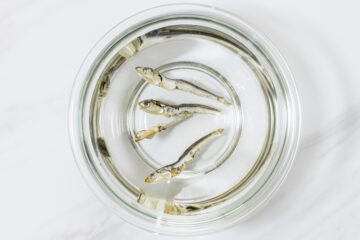
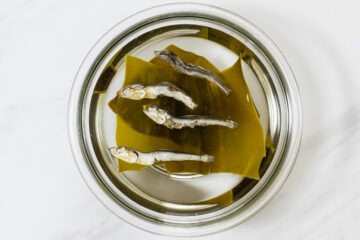
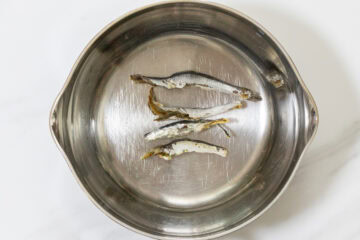
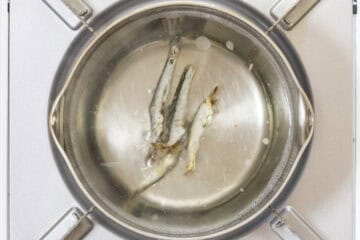
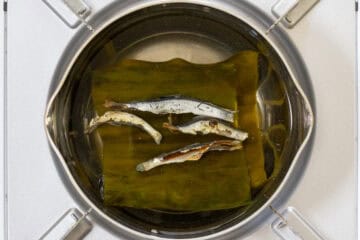
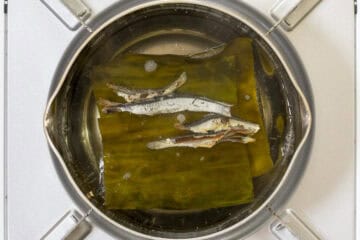
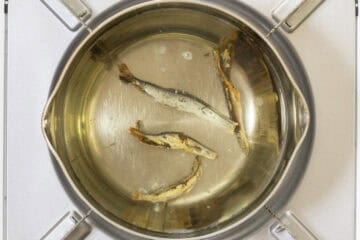

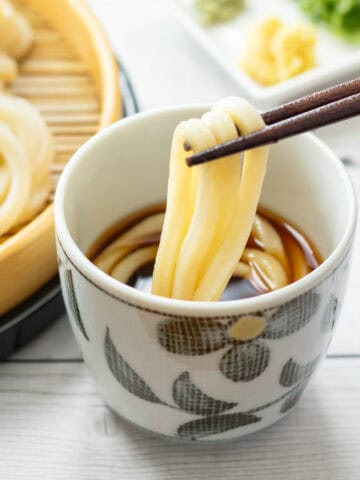
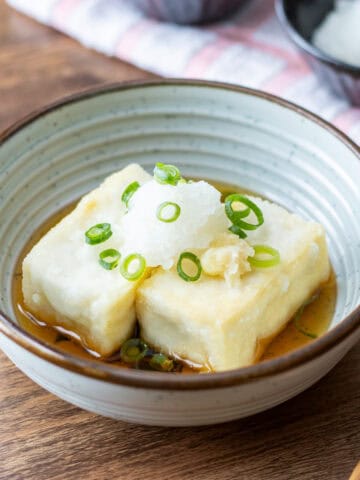

Leave a Rating and a Comment